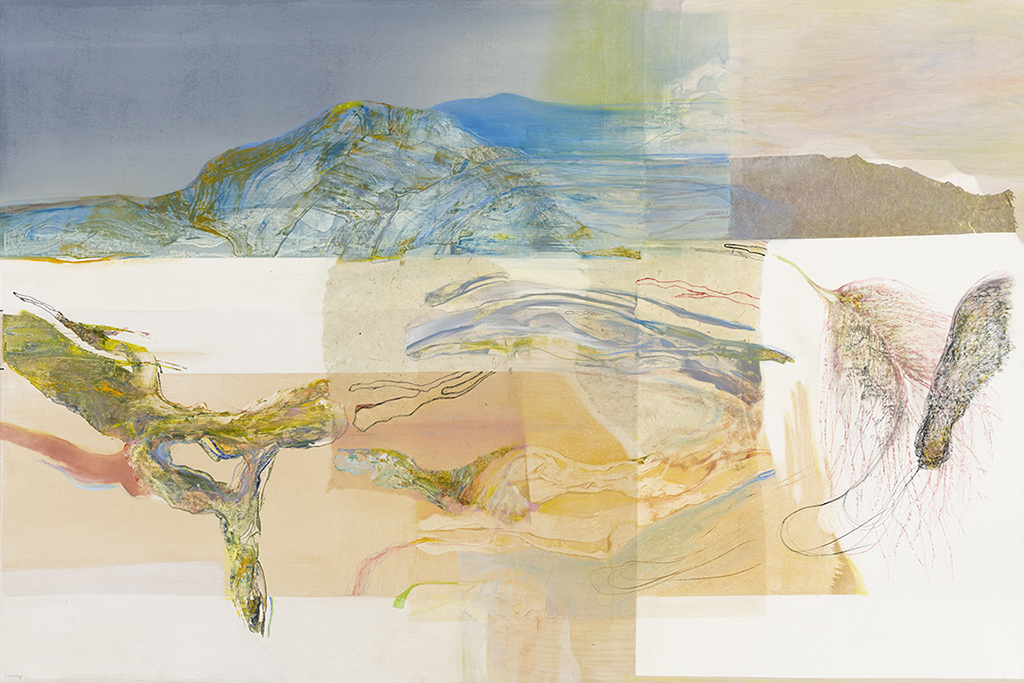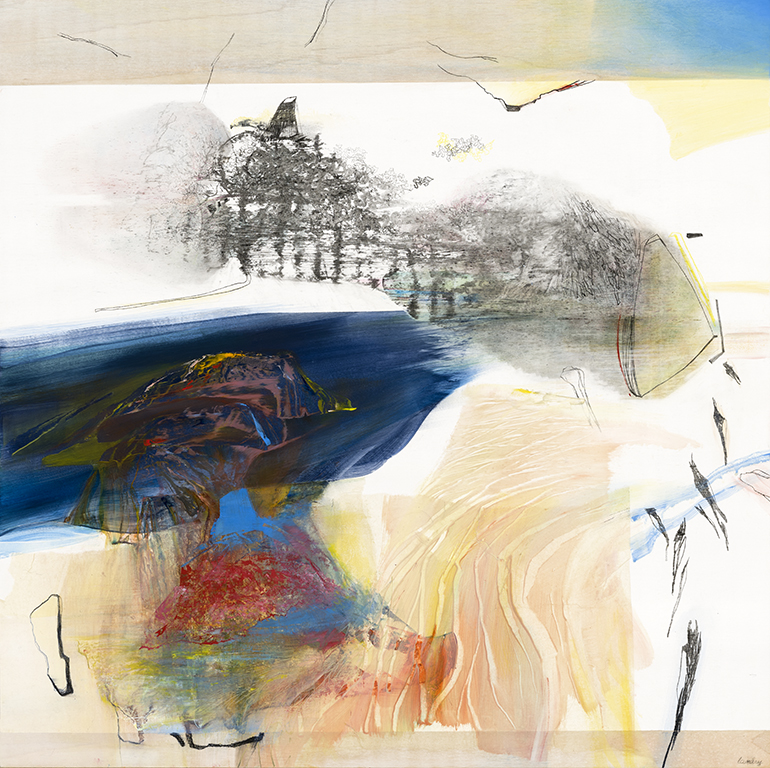Micheline Landry
Micheline Landry was born in Montreal. Even with a diploma in Visual Arts, done after a late return to studies, she considers herself self-taught. All her training and technique were acquired in front of her wall, through a mentor and through various readings dealing with different techniques of oil painting. She also had the chance to have a workshop in the Old Port of Quebec and this is where it all started. Even when she was accepted for a Bachelor’s Degree at Laval University, she needed to be able to run freely while giving herself challenges and also teaching herself. Micheline Landry received a prize for excellence in painting (1996, CASPQ), a grant for creation (1997, CALQ), a first prize by the Museum of Art of Mont-St-Hilaire (1999) and Loto-Québec’s art collection acquired pieces from 2002 to 2014. She also participated in international fair and presented her work in Edinburgh, Italy, New York and London.
She is inspired by details; a trace, a stain, the elements of nature, a word or a vision engendering a discourse. The different materials serve as places where she can oppose the subjects or make them play between them. Her dreamlike atmosphere comes from the coexistence between the abstract and the real. The different oppositions, the materials, the subjects, the techniques, lead to a questioning. She invents places made of parallel times, displacements, condensed or of infinite moments.
Her desires are to offer moments which propose states, contrary matters. Human beings, nature, life, have their two poles (heavy / light, strong / weak, etc.) that serve as a springboard for her. She doesn’t want to fall into the over specific. The different surfaces inspire her and allow her a freedom towards the imaginary, superpositions of places and time. Opposite pencil and oil, wood and paper is a game that allows me a pictorial adventure.
Her work evolves on wood partly muffled and / or plastered. She intervenes on its supports with graphite, coloured pencils, dry pastel and oil. In addition to applying paint, she alters it by removing it, blurring it, scarring it and superimposing it. By this process, she tries to inspire sets of printing and traces. Her pieces often divide into several spaces. Some, where only the pencil remains, seem circumscribed. Others constitute an amalgam of techniques. The intervention will vary according to these places and will make the subject inert or alive.
She wants to free the viewer from his comfort zone. She invites him to venture into an emotional world, although intellectual, dotted with symbolic gestures.




















